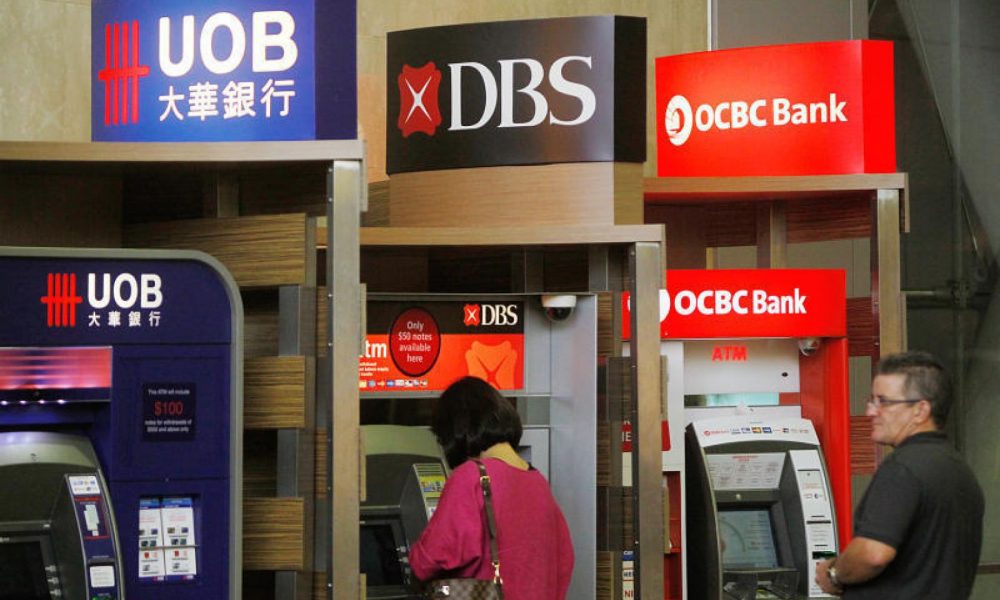Category: Finance
Seedcom-Backed Cau Dat Farm Brings Smart Technology Into Vietnam Agricultural Production
Looking past food delivery startups or applications that do grocery shopping for the urban tech-savvy population. Internet of Things (IoT) is now also moving on to tackle the supply side, widely transforming the agricultural scene.
From solutions for small-scale farming households to large farms, the use of technology has helped farmers and agriculturalists minimize their farming effort while maintaining the optimal growth conditions of the plants.
In Vietnam, Cau Dat Farm is one of the farms using IoT in its agricultural system. The farm in Dalat currently has an underrunning IoT solution deploying a gateway to collect data such as light, humidity etc. through a system of sensors, weather stations, and robots, as to enable the management of farm operations via the cloud.
To accomplish this, the farm tech has formed a partnership with Intel in terms of importing its expertise and hardware from the inception of businesses, as well as incorporating other international hardware supplies and knowledge from agribusiness experts.
Also, understanding the operations and business strategy of Cau Dat Farm, it seems that the Vietnamese farmstead is establishing a connection between farmers through transferring the technology to other enablers.
This is because operators believe that Cao Dat Farm alone cannot cover the country’s demand for food. Hence, the key to the strategy instead is to manage the entire network through ensuring the quality, and transparency of the products made by its partners.
“Cau Dat Farm will be a platform for other agribusiness players to join, and all will produce quality goods,” Pham Ngoc Anh Tung, the director of Cau Dat Farm said.
Tung, which had a technology background in automation, was assured that joining Dinh Anh Huan’s Seedcom – one of the biggest success stories in Vietnam is positive that the application of IoT in agriculture will be robust.
Yes. Indeed it is.

Sellers in street market selling fresh organic fruits and vegetables
As aside from Cau Dat Farm, smart farming has been apparent in Vietnam with its primary movers being Captii Ventures-backed MimosaTEK, which provides real-time solutions to optimize farm operation and Tech mogul FPT Corporation, which has also partnered with Japanese IT equipment and service firm Fujitsu in a smart agriculture project in Hanoi.
But what sets Cau Dat Farm apart from its competitors is that the company is also looking to work with local telecommunication platforms which have already developed their IoT platforms. In this sense, Cau Dat Farm will build a standardized database for agriculture, which is not yet available in Vietnam.
“Once these agriculture data becomes big enough, we will be able to solve the questions of forecasting crops, diseases, and productivity. It will also help connect the value chain together, including farmers, agribusiness companies, retailers, experts, and users.” Pham Ngoc Anh Tung, director of Cau Dat Farm adds.
This is because IoT (Internet of Things) can ensure transparency of food production without amplifying the costs, at a time when the country is highly concerned about food safety. Especially with the rampant cases of food safety violations – a recent case being the mass poisoning of 34 Japanese students who visited a Five-star Hotel in Ho Chi Minh city last month.
Considering the final effect, smart farming has a bright future in Vietnam as compared to traditional forms of cultivation. As despite the growing investment in clean products with high technology that might be more time-consuming as well as taxing in price.
But the products of technology – ready-to-eat tomatoes and lettuce, grown without soil that can be consumed unwashed are filling the gap for Vietnamese that are worried about food safety. They are going organic and looking for a healthy and reasonably priced choice – which make this profitable in the long run.
For more information, please visit http://caudatfarm.com/
By Vivian Foo, Unicorn Media
DBS, Bank Of Singapore Seize Opportunities For More Acquisitions In Asian Wealth Mission
It is an all most familiar pattern, as Singapore banking enterprises have been picking up assets and acquiring wealth management and retail banking arms of foreign players that have retreated the rough terrain of the Singapore market.
But as much as Singapore banks are locked in a race to expand their wealth management businesses, they are also competing with larger Western rivals such as UBS Group AG. Furthermore, Singapore banks also have to keep up with the city-state financial ambitions of being the key financial hub in Asia.
In this scenario, Keith Pogson, a senior partner for financial services at Ernst & Young said, “You either bulk up or you go niche. For the banks here in Singapore, the obvious choice is to bulk up.”
But even among local banks, DBS Bank and Bank of Singapore are the most intense to ramp up on its offerings. As the two banks combined have already announced at least US$400 million worth of acquisitions for the year 2016 alone.
Bringing an update on their most recent purchase, OCBC who wholly owns Bank of Singapore has completed its purchase of Britain’s Barclays Pic’s wealth-management units in Singapore and Hong Kong on Monday for S$ 324.5 million (about US$227.5 million) while DBS has announced last month that it will buy Asian retail and wealth businesses from Australia and New Zealand (ANZ) Banking Group Ltd’s wealth businesses in five Asian countries for about US$110 million.

Bank Of Singapore
A brief introduction on the two Singaporean banks:
Bank Of Singapore
Bank of Singapore (BoS) was formed in 2010 from the combination of the former ING Asia Private Bank business and OCBC Private Banking business. It grew its starting asset under management of US$22 billion to US$62 billion in September 2016, riding on its strong investment capabilities as well as wealth planning and premium advisory services supported by one of the largest research teams in Asia. Operating as one of OCBC’s private banking arm, Bank of Singapore, had $68 billion worth of assets under management at the end of 2015.
DBS Bank
Established on July 16, 1968, by the Government of Singapore to take over the industrial financing activities from the Economic Development Board, DBS since then has grown to become one of the largest bank in SouthEast Asia by assets. At the end of 2015, the private bank had S$97 billion (about US$70 billion) of assets belonging to high net worth clients.
Further Consolidation In Asian Wealth Scene
Both DBS Group Holdings Ltd. and Bank of Singapore, Asia’s largest homegrown private bank, are considering more acquisitions as they intend to expand their foothold onto a larger slice of Asian wealth market share, consisting of businesses from the region’s growing number of successful millionaires.
The two banks are looking to intensify its focus on capitalizing the growing wealth in Asia, which will allow them to offset the drag on interest income by lowering global interest rates.
Bank of Singapore, the Oversea-Chinese Banking Corp.’s private-banking arm said that it will definitely evaluate any opportunities. While the DBS acquisition criteria were also revealed in a Bloomberg Interview to be any deals that plays to DBS strength, fitting with the company’s strategy and reasonably priced.

Tan Su Shan
Obstacles For Foreign Players
Some may question why are these foreign players dropping out of the game in spite of the fast pace growth in Asia’s private wealth scene. Slimmer margins amid rising costs, complex regulatory compliance and mounting pressure for higher returns are among their reasons for leaving as they are unable to achieve the scale needed to be quickly profitable.
Nonetheless, this makes it a great time for Singapore banks to snap up these assets, to build the scale needed to overcome the same challenges without additional burden. Furthermore, these consolidations will help gain a competitive advantage and scale to work in this wealth business environment.
As seen with the move on ANZ Banking Group, DBC has added about 1.3 million people to its client list, including about 100,000 deemed affluent or private wealth customers. Similarly, the Barclays deals have also enlarged the firm assets under management to be more than US$75 billion. This has also made it closer to DBS, which has ranked fifth in Private Banker International’s annual survey of Asia-Pacific Banks, with $79 billion of high-net-worth client assets.
ABN Amro Group: DBS Next Possible Acquisition
On a similar note, DBS Group Holdings Ltd. is among the companies which are considering bids for ABN Amro Group NV’s private-banking business in Asia, alongside with Julius Baer Group Ltd. and LGT Bank that have similarly expressed interests in the ABN Amro Unit.
According to a 2015 ranking by Asian Private Banker, ABN Amro is the 18th-largest private bank in Asia, with $19 billion of assets under management in the region. Sources also told that this deal could potentially fetch more than US$300 million, would most likely be anounced by year-end.
Tan Su Shan did not comment directly regarding this matter.
The Way Forward
Thus, the race is on for Singapore banks to acquire and compete for the largest wealth acquisition which will give it a leg up from its competitors. That is not only on the local level, but the acquisitions come at an opportune time for the Asia Pacific to overtake the Western Europe to become the second wealthiest region in 2017.
Nonetheless, for local banks, the challenge also exis post-acquisition as they have to keep an eye out on the integration of the new assets, and retaining clients. But unlike DBS and BoS, UOB has not pursued acquisitions to expand its private bank, leaving it smaller than those of its two rivals.
By Vivian Foo, Unicorn Media
Singapore To Be World’s Largest Fintech Hub, Marvelstone Group Announced
Singapore’s ambition to be a ‘Smart Nation’ is moving forward as MarvelStone, an Asian private investment group has announced on Tuesday that it will open the world’s largest fintech hub in Singapore next November.
The facility will be known as Lattice80, spanning over 30,000 square feet and to be located in Singapore’s Central Business District, an area that is notably close to the city-state’s key financial institutions, stock exchange, and regulators.
Joe Seunghyun Cho, Chairman of Marvelstone in Crowdfund Insider said, “We think Singapore is the right place for a global fintech hub for a number of reasons. Singapore, being a traditional financial and trading hub, has the legal infrastructure and access to global investors that budding fintech companies would look for.”
Reportedly to be an independent non-profit initiative, one of Lattice80 objective is to establish a global fintech connection. Besides, the project is also aimed to promote local fintech innovations through providing innovation support schemes to existing company and financial institutions.
While for fintech startups prototype, programs such as workspace, events, and educational programs is provided to help develop and expand their business models oversea. These projects are moving smoothly as Marvelstone works closely with Monetary Authority of Singapore (MAS).
Gina Heng, the CEO of Marvelstone furthermore added, “The time is right for innovation, and people are more receptive to the use of technology in financial services. Lattice80 aims to support the fintech ecosystem in Asia and bridge global players to the region.”
Besides MAS, the Marvelstone Group also seeks to bring partners onboard as well, voicing out their intentions to collaborate with other regional Fintech hubs like London’s Level 39, Australia’s Stone and Chalk as well as Israel’s The Floor to create a global ecosystem for fintech innovation.
Sapphire Ventures Secures $1 Billion to Invest
Palo Alto based Sapphire Ventures, owned by SAP, secures $1 Billion to invest in a new $700 Million growth fund and a $300 Million tech fund.
Following on the heels of a large group of venture groups – including Lightspeed Ventures Partners, Norwest Venture Partners, Accel Partners, Founders Fund, and Andreessen Horowitz – Sapphire Ventures joins the circle raising $1 Billion plus in 2016.
Like Wells Fargo and Norwest, Sapphire, along with limited partner SAP do not consider themselves corporate venture, but rather classic venture firms who do not invest by funding companies that can be sold to their partners.
Sapphire became an independent unit in 2011, and has subsequently funded 14 companies which have already moved from private to public and includes familiar names like Apigee, Box, and Square. In addition, Sapphire funded 33 acquisitions including the wildly popular LinkedIn.
Sapphire targets companies with a minimum of $5 million in revenue and invests in startups providing funds of up to $25 million.
App Annie’s latest prediction: Worldwide App Downloads Reach 280 billion by the year 2020
The day is nearly upon you – a tweet orders your favorite pizza, your Apple Watch places your Buy Stock transaction, you automatically add the song playing in your favorite restaurant to your Spotify playlist. That’s right – as your favorite brands adopt the latest mobile app technology to further engage you – App Downloads in the next four years will likely top 280 billion according to the latest prediction by App Annie.
At the end of 2015, worldwide app downloads topped the 112 billion mark, 50 percent of which are attributed to Asian markets, according to App Annie’s latest statistics. App Annie’s forecasts for 2016 include a rise to near 150 billion, with more than half from Asian markets. The final prediction for the year 2020, indicates downloads near 288 billion – Asia’s share estimated at 60 percent of that total.
Of course, App Annie offers this sound advice; downloads are just the beginning of monetization, usage follows with customer engagement and retention.
App Annie, founded in Beijing, knows the reality of exploding app market and features a global team spanning a multitude of countries and cultures delivering solutions to today’s greatest data challenges.
As the app market expands, App Annie notes that in only two years, the app marketplace has grown over 100 percent. People, all over the world, from the U.S. to Indonesia, and everywhere in between, spend 51 minutes of every hour on their mobile devices in apps and that number is quickly rising.
Games apps are no longer the biggest player in the app world as communication apps growth is at 100 percent, social apps at 120 percent growth, and video/media apps are growing at a whopping 200 percent.
The exponential growth does not stop there, global businesses are utilizing apps for marketing and sales of new products and services, and expanding into ticket sales, support services, and media streaming. Banking is poised for exceptional growth as sessions in the top banking apps as banks realize, not only is the service popular among the under 25 crowd, but older users are attracted to the convenience as well. For banks this means huge cost savings with fewer outlets and employees, allowing them to compete more effectively with mobile only financial tech start-ups.
Alongside banking, retail establishments and restaurants, are also poised for incredible growth in the years ahead.
While today, WhatsApp, Messenger, and Facebook rank among the highest used apps worldwide, Snapchat, Uber, Google Maps, and a vast array of retail and commercial apps are leading the way for the app revolution to come – 280 billion downloads strong.





